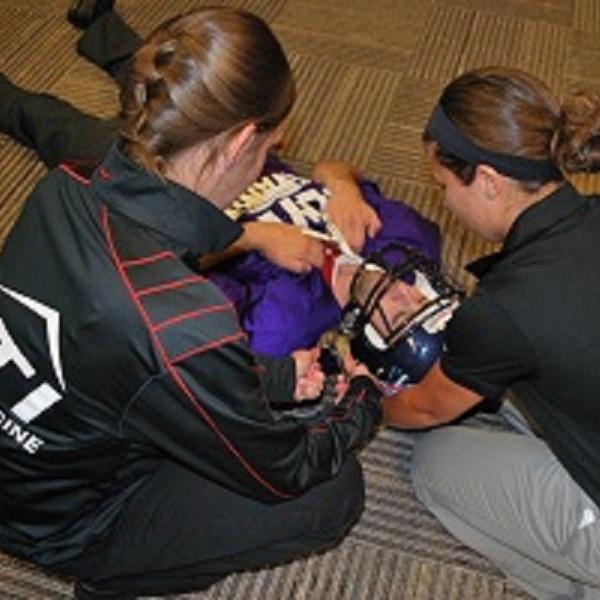ATI Sports Medicine: Getting it done “In 2 Minutes or Less!®”

Each time our athletic trainers take the field or court, they never know what they may face - a sprain, a cut or something more serious.
For this reason, it’s imperative that our Sports Medicine Team is ready to respond appropriately and efficiently, no matter what the situation!
As part of ATI’s annual Sports Medicine “Kick-Off Week” our athletic trainers participate in an interactive session know as In 2Minutes or Less!® presented by Sports Medicine Concepts, Inc. This hands-on sports emergency management program prepares athletic trainers to react flawlessly during sports' worst moments.
“Any athletic trainer can tape an ankle, cover a cut, or develop a rehab program. ATI athletic trainers are also independently certified to have demonstrated critical care skills that can save a critically injured athlete's life,” says Michael Cendoma, Program Director for Sports Medicine Concepts, Inc. “If there is not an ATI athletic trainer on your school's athletic fields, you should be asking yourself why, because the level of commitment that ATI has demonstrated to sports emergency care training over the past decade is unparalleled.”
In simulated true-to-life situational scenarios, ATI athletic trainers are required to demonstrate proficiency in a range of critical care techniques including:
- Repositioning
- Assessment of neurological injury
- Protection of in-line cervical stabilization
- Emergency management of protective athletic equipment
- Transfer and preparation for transport of the equipment-laden athlete
- Emergency airway management
- Delivery of high-quality CPR
- Emergency action planning
During Sports Medicine Concepts' In 2Minutes or Less!® sports emergency care training, the ATI athletic training staff also learns to identify where breakdowns in emergency response may occur. They are then taught to logically think their way through a process for development of a more efficient emergency response protocol, including determining which critical skills are most appropriate, and how best to apply these skills during management of a critically injured athlete.
